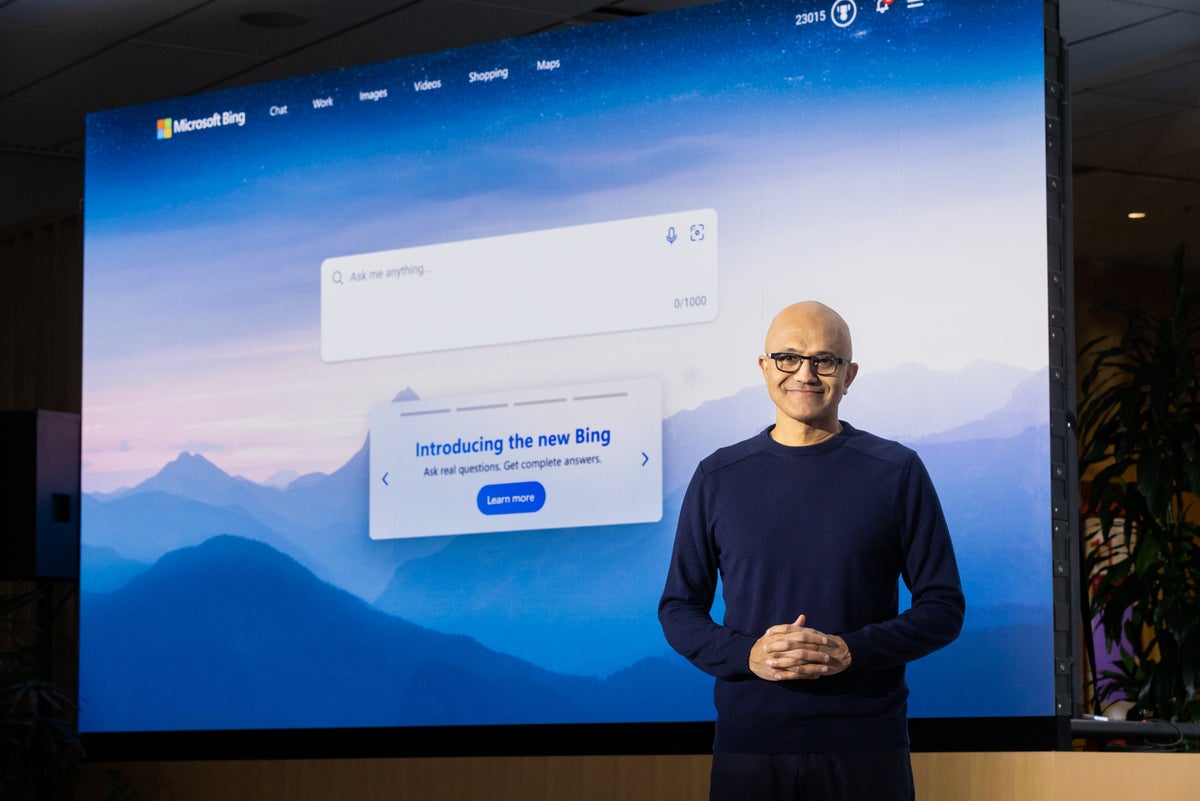Few companies have experienced the ups and downs of the nearly 50-year-old Microsoft. It helped launch the PC revolution in the 1970s and became a colossus of the tech world in the 1980s and 1990s, essentially setting the tech world’s agenda. Then after a federal anti-trust suit and CEO Steve Ballmer’s poor leadership, the company fell into a tailspin and lost its tech luster during a “lost decade” that began in 2000.
When Satya Nadella took over as CEO from Ballmer in 2014, Microsoft began a slow, steady ascent, betting on the cloud rather than relying on Windows. But its comeback wasn’t based on beating competitors with new, innovative technologies. Rather, Microsoft gained ground by leveraging already existing technologies including the cloud, Office and Windows. No one looked to it for exciting tech; no one expected it to set tech’s agenda.
And certainly no one looked to Microsoft for how we might live and work in the future — until ChatGPT chatbot and its integration with Bing took the world by storm. In a few short months, Microsoft morphed from a business that was about exciting as a utility company to one that is setting the tech agenda and has become the clear leader in artificial intelligence (AI).
Say good-bye, Cortana – you’re dumb as a rock
Although it seemed to happen at warp speed, the moment was years in the making. It started when Microsoft abandoned one of its most embarrassing big failures, Cortana, the digital assistant launched in 2014 to compete with Apple’s Siri and Amazon’s Alexa.
Cortana never got off the ground. In late 2018, I documented what an abject failure the digital assistant had become. I pointed out at the time that while Amazon had sold 50 million smart speakers running Alexa, sales of the one smart speaker with Cortana built into it were too small to measure.
I also noted something whose importance even I didn’t recognize at the time: Cortana was moved from the AI and Research Division into the Experiences & Users team. The Cortana team was gutted, with Microsoft’s Javier Soltero, the company’s vice president of Cortana, leaving by the end of the year. It seemed to me merely to signal that Microsoft knew Cortana had no future as a standalone assistant.
It didn’t. In 2020, Microsoft essentially killed it.
But the move involved a lot more than that. It represented Nadella’s recognition that the future of AI wasn’t in smart assistants like Cortana, Siri, and Alexa. Instead, he saw the future of AI — and possibly the future of computing — would be in generative AI like what is now ChatGPT. That’s why a little more than half a year after moving Cortana out of its AI division, Microsoft invested $1 billion in OpenAI, ChatGPT’s creator. Recently, it announced a follow-on $10 billion investment.
Nadella recently threw shade on Cortana and its entire cohort of digital assistants, saying they “Were all dumb as a rock. Whether it’s Cortana or Alexa…
2023-05-03 20:00:04
Article from www.computerworld.com
